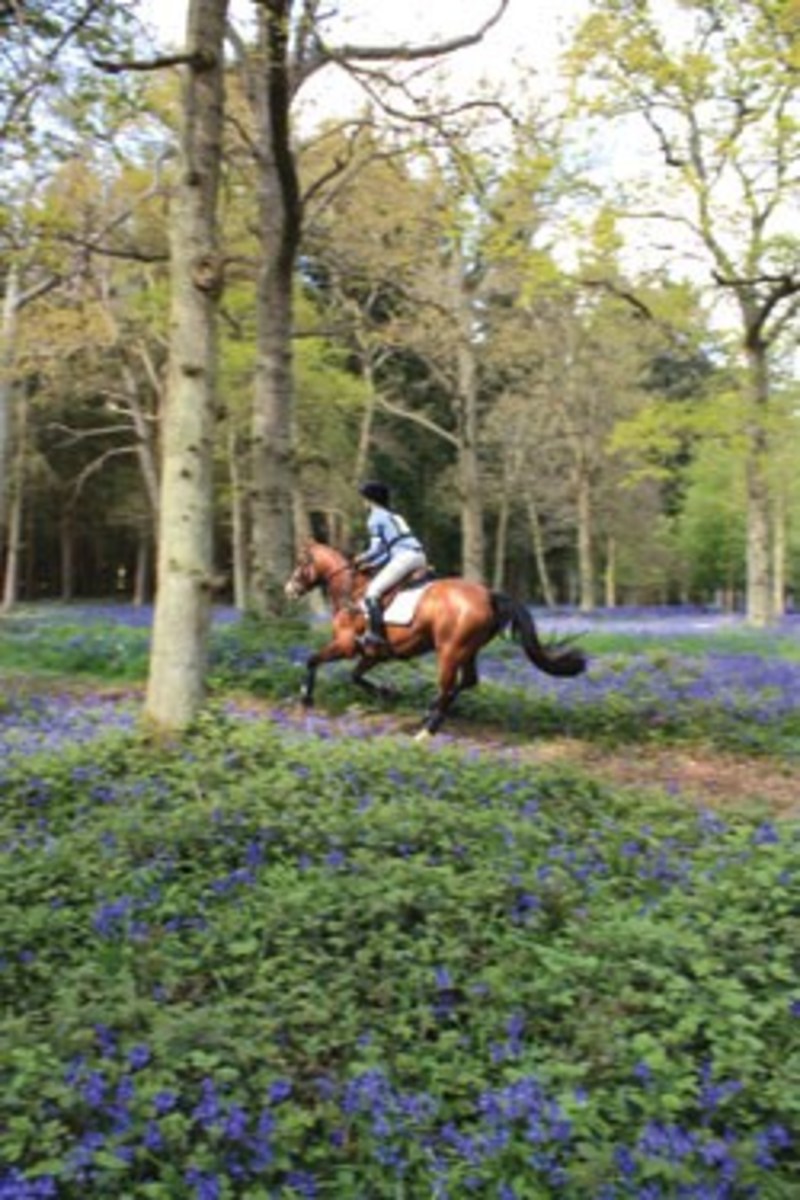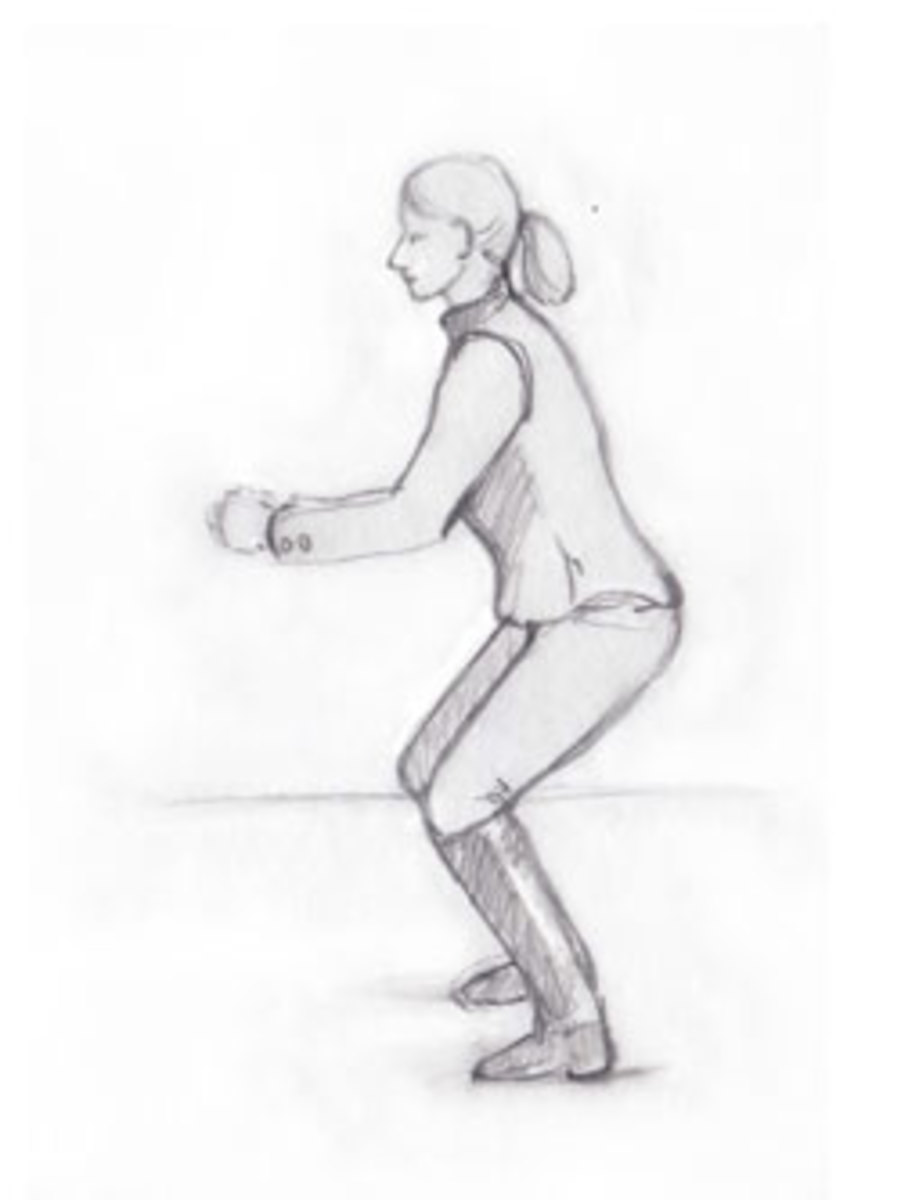
Question: I used to be a hunter rider and now I am mainly interested in dressage. My main problem pertains to the light seat (two-point position), which I still sometimes use when I canter my horse outside. I was told that my two-point position looks like a hunter-rider position, with my rear end sticking out too much. This confuses me. I thought the two-point position is a universal posture riders of all disciplines use for hacking their horses. Is there a difference between a dressage-type two-point position and a hunter-type two-point position?
Answer: This is a good question. There seems to be a lot of misunderstanding or confusion concerning the use of a light seat for dressage riders.
I am frequently asked if it is OK to be out of the saddle. Many riders assume that the lighter two-point position is used only for hacking and jumping. But there are many situations that require a light seat. Horses that tend to be tight in their backs or stiff often respond well to the rider staying off their backs. This is valuable especially during the warm-up phase. For example, many Thoroughbreds that are starting a second career tend to be tense and nervous. Periodically during their work session these horses can benefit from a light seat to help them relax over their backs. In contrast, the very lazy horse often needs to do short sprints to refresh his “engine.”
Introducing work over cavalletti presents another opportunity to free our horses’ backs and improve their strides. Cavalletti exercises are a great opportunity to be versatile in our training. Young and green horses love the diversity over poles and hacking. Even though as riders we can be quite effective with our seats in addition to our legs, a light seat is a great addition to our repertoire.
To answer your question, there is not a specific dressage-type two-point and a hunter-type two-point position. The inclination of the upper body varies depending on the activity. The most extreme forward position is used by jockeys galloping racehorses or steeplechasing. We often see a very forward upper-body position used by event riders on cross country. This position changes many times during a cross-country course depending on the terrain, footing conditions and types of jumps.
The position used for jumping in a ring is generally less forward. It is more closely associated with a light seat used when schooling a dressage horse. The extreme opposite of a light seat is used when a dressage rider is asking the horse to shift his weight to the hindquarters for collection.
Generally, we always want to try to stay over our horse’s center of gravity, which is just behind the withers. This enables the rider to stay in better balance and helps keep your horse balanced. I have found that many riders tend to have their upper bodies inclined so far forward that they are not balanced. This can create a tendency to have a tight knee, with the lower leg slipping back. This position can cause a lot of problems for riders who jump (I call it the ejection seat). It is very important to always have your leg directly underneath you, with the stirrup leather and foot perpendicular to the ground. This creates a solid base of support. As you lift your seat out of the saddle, you want to maintain a straight line from your ear to shoulder, hip and heel—just as you would in your deeper dressage seat. This position allows you to stay off the horse’s back, keep your balance and keep the horse balanced without him falling on his forehand. In this position there is not the appearance of the rider’s rear end sticking out. A great image to have in your mind is the position you are in when you squat. This is just a bending of your knee and the closing of your hip, while keeping your head and shoulders in alignment with your hips and feet. This position requires a great deal of strength in your abs, back and legs. With this type of light seat, you are better able to keep the horse in balance.
Try these fun exercises:
1. While standing on the ground, try squatting (as shown in the correct alignment illustration above). You will find it is easy to stay in balance.

2. Assume the same squatting position on your horse. Try this at the halt, walk, trot and canter. (You will find this is not as easy as it sounds.)
3. While standing in front of a wall, put enough distance between you and the wall that you can use it to catch yourself with your hands (as shown in the leaning-forward pose above). Now lean forward with your upper body instead of squatting. As you lose your balance, you will find the need to catch yourself with your hands.

4. Assume the same leaning-forward position on your horse. You will find it necessary to balance on his neck. This position makes it difficult to keep your horse off his forehand.
As dressage riders we all work very hard to improve our seats. We work on a longe line to help relax and stretch our legs down and around our horses. We work to improve and strengthen our pelvic muscles to absorb our horses’ movements. I find that many riders haven’t spent much, if any, time learning to balance off their horses’ backs in the light seat. Spending more time working in this position can help develop strength and balance, which go a long way toward helping us become secure, confident riders. Through our balanced positions we are better able to keep our horses in balance as they progress in their training.
Susan Lewis Harris is a USDF certified instructor through Fourth Level and a U.S. Eventing Association (USEA) certified instructor—Level III (Intermediate 2-star).












